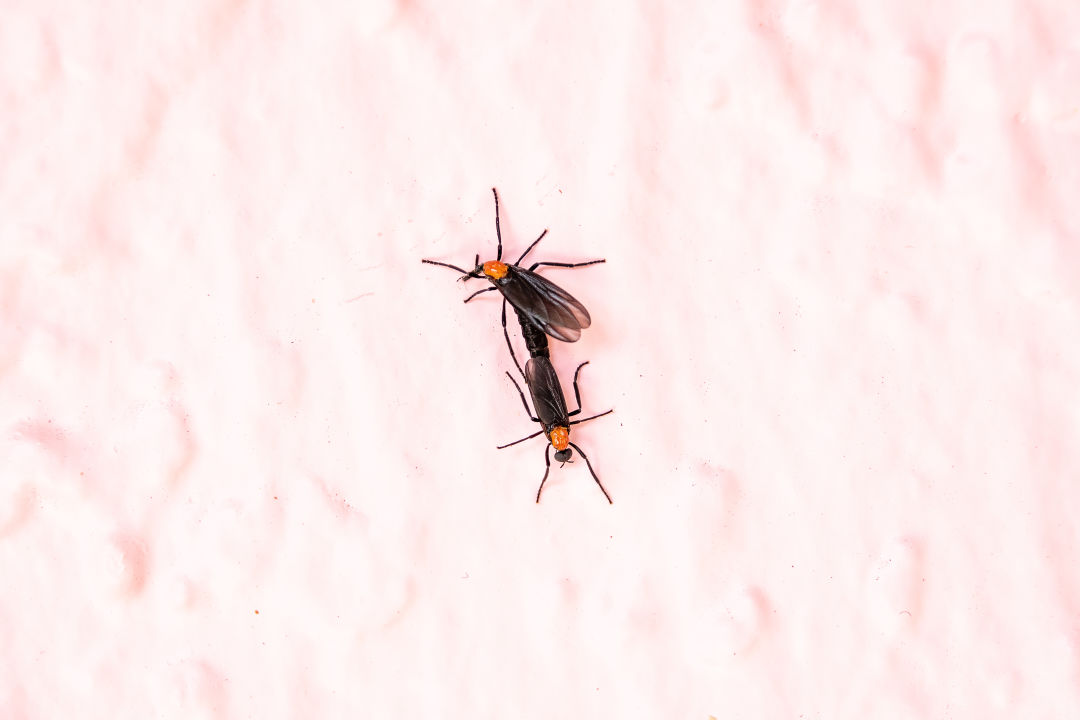It's Lovebug Season

You can tell it’s lovebug season by the gory splatters on your car’s grill and windshield. Mostly harmless, lovebugs show up as couples and thrive during two main seasons that last for about two weeks in May and two weeks in September. Norman Leppla, a University of Florida professor who specializes in entomology, tells us what we need to know about this lusty insect.
Print the Legend
A popular myth states that lovebugs (scientific name: Plecia nearctica) are the result of a genetic experiment gone wrong at the University of Florida, where they were trying to create a new insect to combat mosquitoes. The truth is more mundane. Lovebugs originated in Yucatán, Mexico, and arrived in Florida in the mid-20th century. Leppla says it is unknown if the migration was natural or caused by man.
Live Fast, Die Young
Lovebugs spend most of the year as larvae in leaves and on soil. What you see during lovebug season is the reproductive activity of the adults. They “do it” twice a day and die off in two days.
The Birds and the Bees
Mating lasts about 12 hours, but lovebugs’ abdomens stay attached for up to two days. While they mate, the male gives nutrients to the female so she’ll produce healthy eggs. After the male dies, the female drags around his corpse.
The Good News
While annoying to humans, lovebugs do have a positive impact. They develop in moist areas like ditches, bayous and swamps, and help decompose dead leaves and grass.
Gone with the Wind
Lovebugs are attracted to automobile exhaust or any equipment burning fuel, particularly if it’s warm. The bugs aren’t strong flyers, so a breeze caused by a fan will keep them from bothering you. Outdoor black lights also attract and kill them, says Leppla.
On the Road
Swarming lovebugs on highways can clog radiators, reduce visibility by splattering on windshields and headlights and even ruin your paint job. As the dead bugs decay, acid from their bodies eats into paint.
Car Care Tips
“I carry a spray bottle of soapy water and a bug scrubber to wipe down my car,” says Leppla. “If you drive a long way and they get baked on by the sun, use a lightly moistened dryer sheet to easily rub them off. Nearing lovebug season, waxing your car to make the surface stick-free helps, too.”